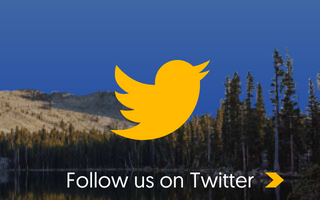Support

Groveland
18800 Main Street (Hwy 120), Groveland, CA 95321
Office Hours: MON-FRI 8:00 am - 4:00 pm
24 hour phone support available even after office is closed.
san andreas
10 E. St. Charles Street, San Andreas, CA 95249
Office Hours: MON-FRI 8:00 am - 4:00 pm
24 hour phone support available even after office is closed.
FAQ
Frequently Asked Questions And Answers
Internet
A: There are several reasons your internet might be down. Here’s a list of possible reasons and what to check:
Your WiFi router. A router is the little box with 2 (or more) antenna sticking out the top, it’s what broadcasts your internet signal wirelessly throughout your house. It does a lot of heavy lifting and rarely gets much attention. First be sure to give your router a nice dusting from time to time, and when your internet goes down try unplugging it from the outlet for at least 60 seconds, then plugging it back in (this is called a power cycle). Most of the time that will do the trick.
- The radio antenna. The radio is the equipment we put up somewhere high, usually near or on the roof. It’s the thing that catches the signal from our towers and sends it down to your WiFi router. Electricity is fed to the radio from a little black box inside your house (usually near the router) called a POE (Power Over Ethernet) that is plugged into the radio, your router, and an outlet. Try to power cycle your radio antenna the same way as your router by unplugging the POE from the outlet for at least 60 seconds and plugging it back in.
- The radio antenna + Mother Nature. We’ve seen it all… critters chewing through cables, tree branches falling on equipment, conspiracy theorists stealing other people’s antenna because they don’t want their minds read… all kinds of stuff. If power cycling your router and radio doesn’t work, and if it’s possible, go outside and do a quick visual inspection and make sure something didn’t physically happen to the equipment.
- Your device. “Device” is a generic term for anything that connects to your internet signal like a laptop, phone, iPad, Roku, Smart TV, etc… Sometimes it’s just the device itself having a hard time connecting. Try turning it off and back on again. If you power cycled your router and antenna your device may need to be rebooted too. After it’s powered back up it can sometimes take several minutes for everything to start talking to each other again, so try to be patient. Also, be sure that your device is trying to connect to your router’s WiFi and not your neighbor’s WiFi.
- Our tower. Towers usually sit on hill tops and get a lot of abuse from the weather (and sometimes people), so the equipment up there can be affected. Once again, we’ve seen it all: A thick ice crust over the entire tower, radio dishes dented by falling ice, floods, fire, shotguns… Whatever the case, rest assured, if the trouble is with the tower, we already know about it and are working on fixing it. We try to send out alerts as soon as possible via email, Facebook, and recorded messages on our phones to keep you updated.
- If none of those things work, and you haven’t seen a message about a tower outage, please give us a call 866-378-8393 M-F 8-4. We also have a third party after hours call center that can help with some basics if you need help outside our regular office hours, you can reach them at the same number.
A: Speed is how fast your devices connect and exchange information through your internet connection; it’s measured in Mbps (Megabits per Second). Typical speeds for residential fixed wireless services, is anywhere from 3-25 Mbps download and 2-5 Mbps upload. It’s very important you have the right speed for your needs. If all you do is check your email from time to time, you don’t need much. If you have a house full of people all trying to stream their shows at the same time you need a lot more!
Data is how much you use your connection and how often. Conifer provides unlimited data with all of our monthly packages, so you won’t even need to think about that with us.
A: We love streaming! It’s such a convenient way to watch what you want when you want. Minimum suggested Mbps for streaming on one device at a time is 5 Mbps*. The more devices you want to use at the same time the more speed you’ll need.
*Different definition standards can require higher speeds for streaming too, so be mindful of High Definition, 4K, or 1080pi standards.
A: Oh there’s lots of ways these days… First off, you’ll need a device to stream with like a smart TV, Fire Stick, Roku, Apple TV and most gaming systems allow for streaming as well. These devices connect to the internet and allow you to download apps for different streaming services like HBO, Showtime, Amazon, Disney, Stars, CBS, NBC, ABC, Comedy Central, the list goes on and on… Most of those apps have a monthly subscription and cost usually in the $5-15 per month range. The neat thing about the apps is that you can turn them on and off as needed. If you only have one show you like to watch with a particular app, only pay for it while you’re watching, then you can turn it off again until the new season comes out and save some money.
A: This one is complicated… The real concern about speed with cameras is the upload speed. Security camera technology changes constantly and so do their network requirements. Here’s a list of just some of the things that add to the speed demand of your camera system: How many cameras you have, the resolution quality of the cameras, if you’re trying to view them live from off-site, and how many you’re viewing at once. Many camera systems you see now-a-days have no on-site recorder (AKA: DVR- Digital Video Recorder, or NVR- Network Video Recorder), this means all your footage is stored in the cloud and the cameras only work with an active internet connection. If this is the case for your cameras, try to only view one at a time for improved performance.
Here’s our recommendation for security cameras in a rural area (if you’re still shopping)- Get cameras that store their footage to an on-site recorder. This way, if your internet connection does go down, or the speed is not sufficient, the full HD footage from the cameras will at least still be saved to the recorder on-site. These systems still connect to the internet so that you can view them off site, but this configuration gives you a back-up for when things inevitably go sideways as they do here in the mountains.
Whatever the case- allow yourself at minimum 1.5-2 Mbps of dedicated upload speed to view just one camera off-site at a mid-range resolution.
A: Click here to test your speed.
Keep in mind: A speed test will only be testing the speed that’s available to the device you are running the test from. So, if someone else in the house is watching TV, or you’ve got cameras on, or a smartphone, or any other kind of active device using up some speed, the test will only show what’s left over for the device you’re using. To get a more accurate representation of your speed, be sure to turn off or disconnect anything else that may be using your internet first. Also try running a test using just WiFi, then hardwire your computer directly to your router and try again. Oftentimes, it’s the wireless connection causing some slow down.
A: Ya gotta get a new router.
If you happen to be renting one from us, and the cause was normal electronic stuff, we’ll cover the cost. If the cause of the issue was something like your dog peeing on it, or your kid using it as a bike ramp, you’ll need to pay for it.
If you bought the router out-right from us or another retailer, then you will need to purchase a new one.
The cost of a new WiFi router from us is $99 to purchase. Or you can do like we do and order one from Amazon. The choice is yours.
A: Here at Conifer, we’re what’s called a WISP, Wireless Internet Service Provider. We provide fixed wireless internet service versus hardline or satellite (we’ll explain those in a bit). Fixed wireless means that we have a network of towers on hilltops that send out the internet connection wirelessly to our customers; that signal is received via a radio antenna we install on your home/building. A line-of-sight is required from your location to one of our towers. Because of the nature of the geographical area we live in with all of our beautiful hills, mountains, and valleys, line of sight can sometimes be tricky and there are areas we can’t serve.
Now… hardline internet service… This is when there is a physical wire that runs all the way from your router, out the house, down the street, and off to eventually meet up with a fiber optic connection somewhere. To be fair and honest: this is currently the fastest and cheapest kind of internet service you can get. If you can get it, the problem is, in rural areas, it’s hard to get.
Satellite internet service… This is when you have a satellite dish on your roof that gets the internet signal from a geo-synchronous satellite in orbit around the planet. To be fair and honest: it’s the only kind of service some folks can get because of their hard to reach location, but it’s also the slowest and most expensive.
A WISP provider falls somewhere between those two, we have slower and more expensive service than hardline, but available in more places. And faster, cheaper service than satellite, but not available in as many places.
It’s important to note that none of these types of service are perfect, all have their pros and cons, but we hope this helps sort them out a bit. If that’s all still a little confusing, please watch this video that helps out with some slick illustration and snappy music: How Things Work
A: No.
But to be fair, the antenna we put up does look a bit like a satellite dish, except it’s not. It points to a tower nearby, not into space. For further explanation please see above.
Technical - Voice/VoIP
A: Our Voice service is what’s technically called VOIP (Voice Over Internet Protocol). It’s phone calls… but over the internet!
Like everything in life, it has it’s good and bad– Bad? Since it uses your internet for calling, if there’s a problem with your internet, then there’s also a problem with your phones. Good? It’s cheaper than a traditional landline, and those will eventually be going away anyway (someday, we couldn’t really say when).
A: Yes!
If you subscribe to residential VOIP service, we will install a magic little box that converts your existing phone wiring in your house to digital and re-directs them to your internet connection (ok, maybe not magic, but kinda complicated, so let’s go with “magic” to keep this brief).
A: Yes, again…
Part of the paperwork to switch your phone service over to Voice/VoIP is a document to “port” your number to our servers. The thing is, you don’t actually own your phone number, and neither does your phone company, it’s technically “owned” by the government. Any time you switch carriers you have to submit a form to them so it can be re-assigned to your new carrier (aka- ported). This process takes about 10 days and the agency in charge of it has a fee of $10.
At this point you’re probably thinking to yourself… “But I don’t have to do all that with my cell phone!”. You do actually, it’s just already built into cell companies’ processes and contracts, so you don’t really notice it unless you read the fine print.
A: When you first establish your voice service your number will be assigned to your location, that way your 911 call will be routed to local authorities.
A: Pick up your phone, dial your own phone number, and once the voicemail starts you hit *, then wait for the prompt and enter your pin number. It should be written down for you, but if you lost it, you’ll have to call our office during business hours so we can look it up. (Don’t worry, it happens to the best of us!)
A: Yes.
The voicemail option needs to be disabled in your account, so just let us know if you’d prefer to use your answering machine and we can help you out.
Billing
A: Heck yes!
Auto pay really does make life easier for everyone… just sign in to your account through the portal here, or give us a call.
A: Monthly on the anniversary of your installation date.
A: Sure…
We like to be flexible, just give us a call, and we can adjust the billing date for you.
A: Nope.
What you see is what you get. We’ve built in all the taxes etc. to the monthly rates you see. We like to keep things simple.
Contracts
A: The contract length is up to you!
We offer three contract options: Month-to-month (no contract), 1 year, or 2 years. Other than the term length the only thing affected is the installation price as follows*…
Month-to-month = $299 install
1 year contract = $199 install
2 year contract = $99 install
*These installation prices assume a “typical” installation where the antenna is mounted to an existing structure with a simple wire run into the house. If additional labor or equipment is needed there may be additional cost.
A: If you’re moving to an area where we have coverage you can take your contract with you and we’ll move the equipment for $75.
If you’re moving outside the coverage area, or are breaking the contract for any other reason-, first off, we’ll be bummed to see you go, but then the charges are as follows: $250, or remainder of the charges in your term whichever is less.
(Example: If you only have 2 months left @ $70 per month, you’d only be charged $140)
A: Yes.
Will you be away from home for a couple months, or did life throw a curve-ball? We can pause your service for up to 6 months. That time will simply be added on to the end of your contract (if any), just give us a call and we can help you out.
A: Ya sure can.
Under contract or not you can change your speed package. Not fast enough and want to try the next speed up? Or, did the last kid move out and don’t need so much speed any more? Either way just give us a call and we can adjust your speed package. It will not affect your contract term.








